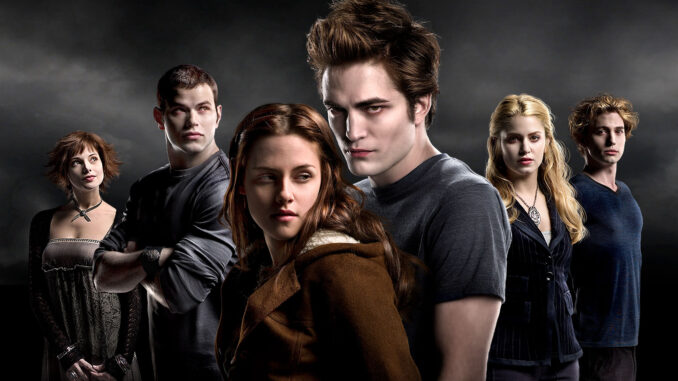
The Sparkle Reclaims the Cringe: How Memes Ignited a Twilight Renaissance
For years, the mere mention of the Twilight Saga elicited a collective groan, a knowing cringe, or a conspiratorial whisper of "guilty pleasure." Stephenie Meyer’s tales of a mortal girl, a brooding vampire, and a lovesick werewolf, once the epicenter of teenage obsession, had seemingly receded into the shadowed forests of Forks, Washington, relegated to the annals of early 2000s pop culture oddities. Yet, against all odds, a shimmering resurgence has taken hold, not in the pages of new novels or the re-release of films, but in the vibrant, chaotic, and often ironic landscape of social media. The Twilight revival, particularly on platforms like TikTok and Twitter, is far more than a simple nostalgic wave; it represents a fascinating cultural phenomenon where a once-maligned pop culture artifact is being re-evaluated, reclaimed, and ironically celebrated through the lens of internet memes, revealing evolving tastes and the powerful alchemy of collective digital memory.
To understand this peculiar resurrection, one must first recall Twilight's initial dominion. From 2005 to 2012, the books and subsequent films were an inescapable cultural force, fueling fervent "Team Edward" versus "Team Jacob" debates, inspiring countless fan fictions, and spawning a legion of dedicated "Twihards." The saga tapped into adolescent angst, the allure of forbidden romance, and the primal fantasy of being utterly, cosmically desired. However, as quickly as it rose, its critical stock plummeted. Its earnest melodrama, sparkly vampires, and often problematic relationship dynamics became targets of widespread derision. To admit enjoyment was to expose oneself to ridicule; Twilight became synonymous with teenage earnestness, a phase to be outgrown and forgotten, or at best, remembered with a detached, self-conscious smirk.
The embers of this forgotten fire were rekindled not by a critical reappraisal, but by the relentless churn of social media algorithms, particularly TikTok. The platform’s short-form video format and sound-byte culture proved to be the perfect petri dish for Twilight's unique brand of absurdity. Users, often Gen Zers who were either too young to experience the initial fervor or old enough to recall its "cringe" status, began unearthing clips, lines, and character quirks, re-contextualizing them for comedic effect. The very elements that once made Twilight susceptible to mockery – its dramatic pauses, the intense gazes, the overtly literal dialogue – became its greatest assets for meme-ification.
The memes themselves are the beating heart of this revival, each a bite-sized distillation of the saga’s essence. Take, for instance, the infamous "Where have you been, loca?" line delivered by Jacob Black. Stripped of its narrative context, it becomes a universal expression of awkward reunion, a self-aware nod to the clunky dialogue, and a perfectly relatable, slightly unhinged greeting among friends. The meme isn't just about Jacob; it’s about that specific, endearing blend of sincerity and discomfort that defines so much of the Twilight universe.
Similarly, Edward Cullen’s iconic revelation, "This is the skin of a killer, Bella," delivered with a glint in his eye and a dramatic flourish, became a goldmine. TikTokkers transformed it into a versatile template for everything from revealing mundane secrets ("This is the skin of someone who just ate a whole pizza") to highlighting absurd fashion choices. The humor lies in the grandiosity of the delivery applied to the utterly pedestrian, mirroring the saga's tendency to imbue everyday moments with operatic significance. Even the ridiculous visual of Edward running through the forest with Bella on his back, exclaimed as "Spider monkey!" by a smitten Bella, found new life. It's an image that is both genuinely romantic in the film's context and hilariously over-the-top, perfectly suited for ironic appreciation.
What these memes achieve is a collective act of reclamation. By embracing and exaggerating Twilight's perceived flaws, the internet has diffused its "cringe" power. The mockery shifts from an external critique to an internal, self-aware celebration. It's no longer about whether Twilight is "good" or "bad" art, but about the shared experience of its unique, undeniable charm. The community formed around these memes is one of shared nostalgia, where old fans can finally shed their self-consciousness and new fans can discover the saga through a lens of humor and camaraderie.
Beyond the laughter, the Twilight meme economy speaks to a broader cultural truth about our evolving relationship with media. In an age of endless content, revisiting familiar, even flawed, narratives offers a unique comfort. The revival isn't just about mocking; it’s also about genuine appreciation for the intense feelings Twilight once evoked, albeit with a healthier dose of irony. It’s a testament to the fact that pop culture, no matter how critically dismissed, holds potent memories and can, through the democratic and anarchic power of the internet, find new meaning and unexpected longevity.
In conclusion, the glittering resurgence of the Twilight Saga on social media is a fascinating case study in how digital platforms can reshape cultural narratives. Fueled by a stream of self-aware, often hilarious memes, the saga has been pulled from the shadows of dismissal into the bright, ironic light of collective appreciation. It demonstrates the internet’s capacity to turn past "cringe" into present gold, allowing a new generation to discover, and an old generation to reclaim, a cultural phenomenon that, for all its quirks, still casts a long, sparkly shadow. The Twilight saga, it seems, truly is forever, its legacy now immortalized not just in books and films, but in the endlessly shareable lexicon of internet humor.
